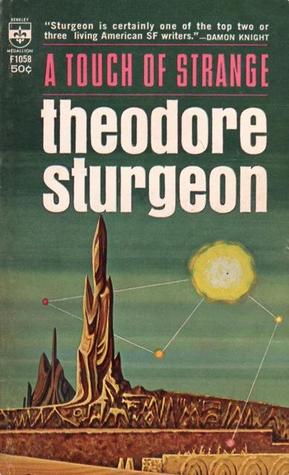Vintage Treasures: A Touch of Strange by Theodore Sturgeon
 |
 |
 |
I’ve really been enjoying this gradual survey I’ve been doing of Theodore Sturgeon’s paperbacks. It hasn’t been a particularly deliberate undertaking… the truth is that, as I come across his books, I’ve been talking about them. This week I stumbled on a copy of the 1965 Berkley edition of A Touch of Strange (above middle), and here we are.
Part of the reason I enjoy them is that I find it fascinating that a writer could have made a decent living in this business selling almost exclusively short stories. Sturgeon did write five novels (six, if you want to count his 1961 Voyage to the Bottom of the Sea novelization), but he’s far more well known for more than two dozen short fiction collections. And it was upon them that he largely built his considerable reputation.
Another reason is that I genuinely find it delightful to catalog the different editions, and note all the variations. A Touch of Strange was reprinted five times, by three different publishers, between 1958 and 1978, before it vanished from bookstores forever. Each of those editions is unique, not just in cover art and design, but also in how it was packaged and presented — and, in some cases, in content as well.









